Here at That’s Shanghai, our love for noodles knows no bounds.
So much so that we’ve dedicated dozens of articles specifically to the topic of pulled, stretched, rolled, folded, twisted, pressed and pleated strands of carbs in any and every form.
From China to Italy, Spain to Singapore, Japan to Germany (and beyond), we still haven’t even begun to scratch the surface.
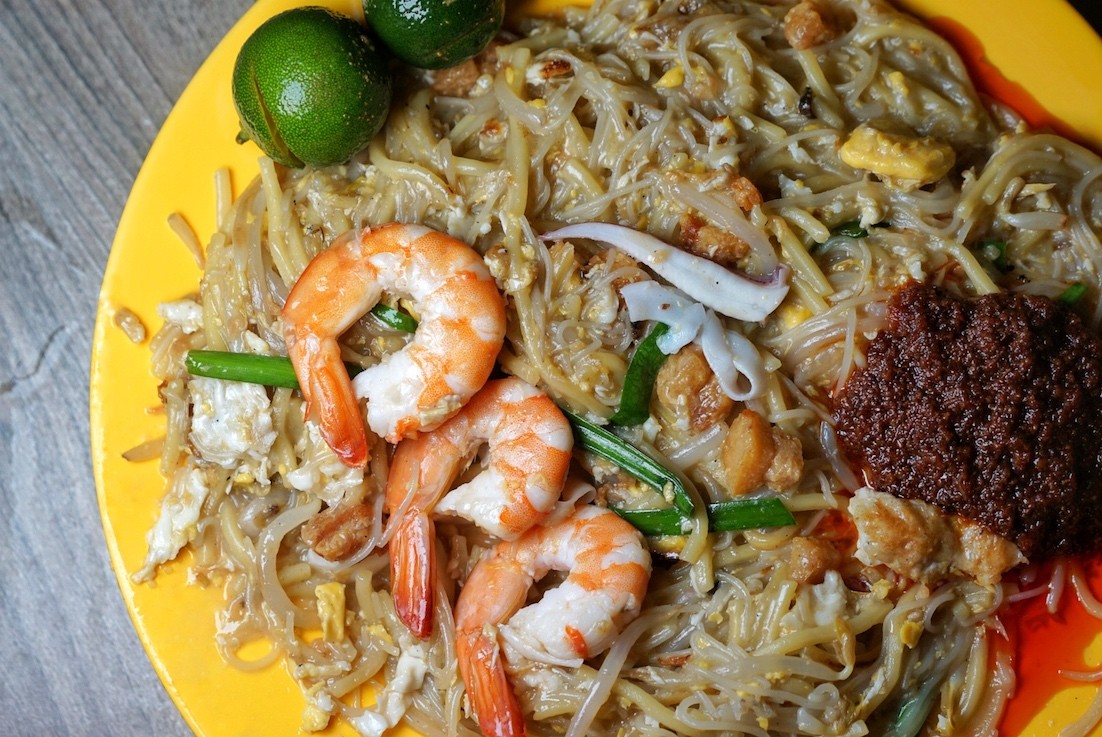
Image by Sophie Steiner/That's
And scratch the surface we are attempting to do – by selecting just one representative noodle dish from a handful of surrounding Asian countries (no easy feat to say the least), and highlighting our favorite place around town to dig in (chopsticks optional).
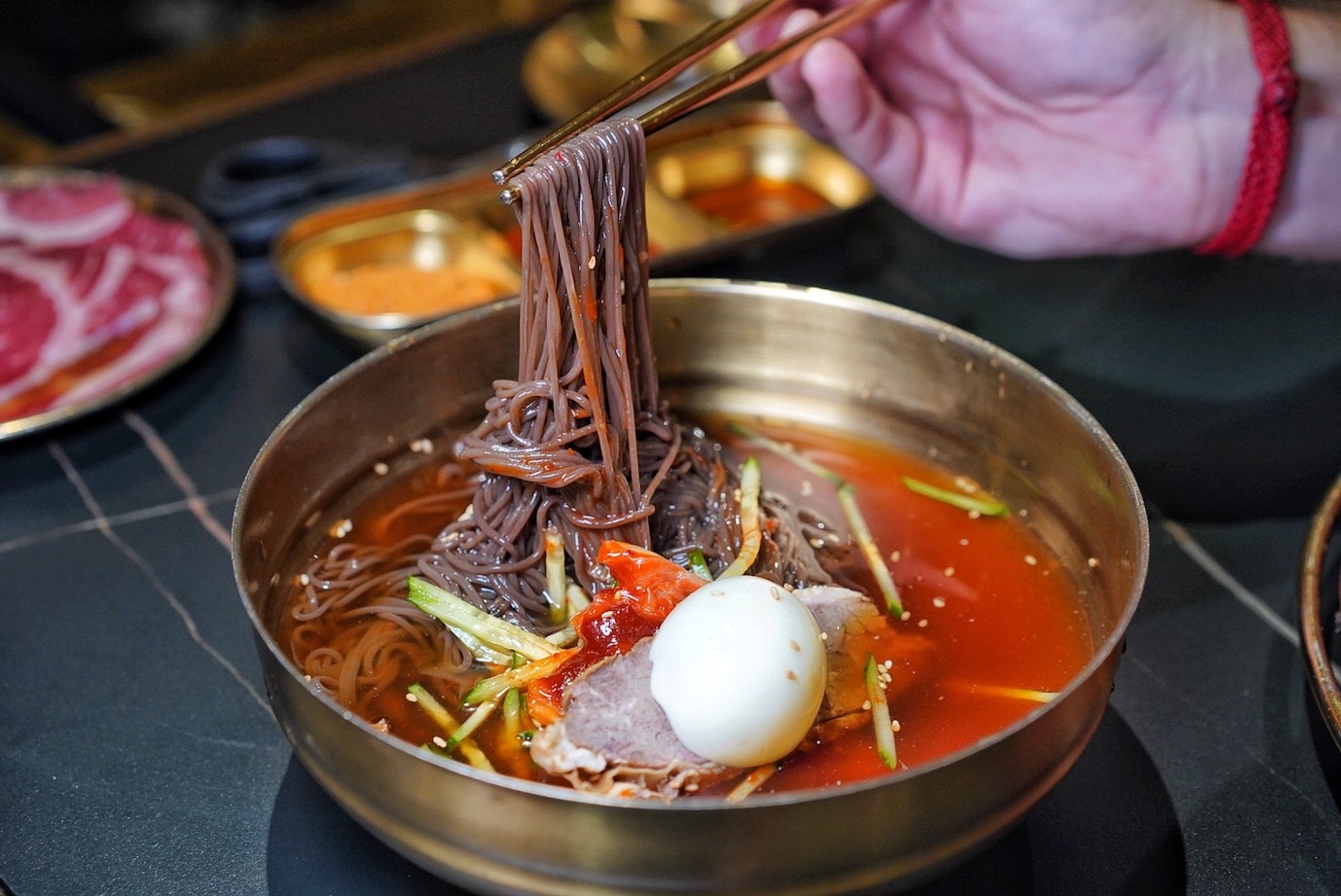
Image by Sophie Steiner/That's
 Image by Sophie Steiner/That's
Image by Sophie Steiner/That's
Cheaper than a plane ticket, it’s time to grab your gastronomic passport and traverse the continent, all within the confines of our dear Shanghai’s borders.
Japan – Ramen
Bari Uma | 霸吗拉面
Undeniably one of the most globally adored noodles, Japanese ramen has a cult following numbering in the millions, if not billions.
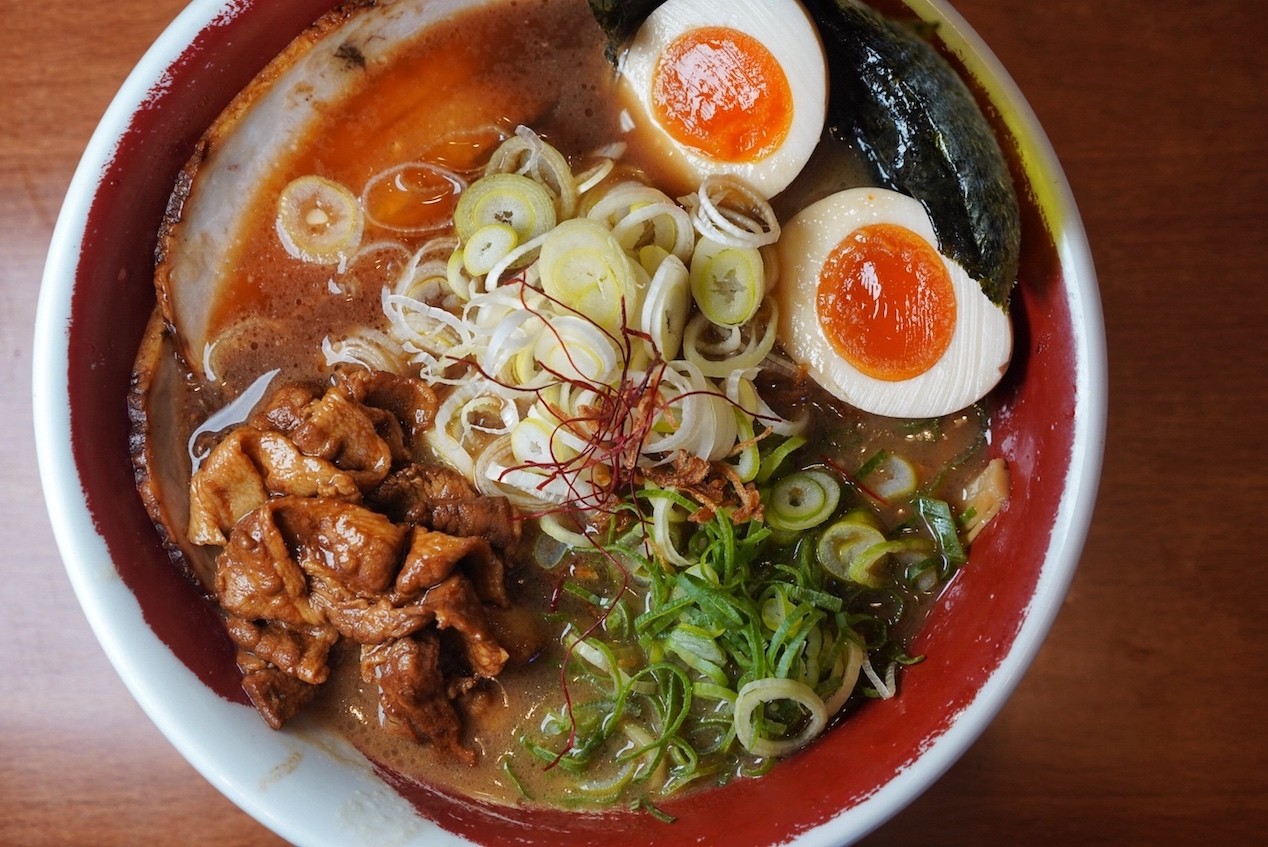
Image by Sophie Steiner/That's
With dozens of regional varieties – from tonkotsu to shio, tsukemen to shoyu, miso to tantanmen – ramen varies by not only flavor and thickness of broth (the most essential and time/effort consuming part of each piping bowl) but also toppings, noodle type, presentation, and spice level.

Image by Sophie Steiner/That's
While Shanghai has dozens of ramen shops within downtown alone – each sporting its own secret recipe – we find ourselves gravitating towards Hiroshima-based chain Bari Uma (霸吗拉面), a tonkotsu ramen shop with franchises spanning Greater China to Southeast Asia to Australia.
It’s a popular one, and for good reason.

Image by Sophie Steiner/That's
The notably stodgier (and saltier) Tonkotsu Pork Bone Ramen (RMB48) slickly coats each noodle strand, with toppings including: a hefty slab of pork belly chashu – impregnated by grill smoke that seeps into both the meat and perimeter ribbon of fat; an expertly cooked Japanese soft-poached egg, with a gooey yolk the color of the sun; crunchy pickled bamboo boasting a sour funk to cut through the soup’s overtly porky richness; and a boatload of scallions for a kick of sharp freshness.

Image by Sophie Steiner/That's
An overall epic kuai-to-calorie conversion rate, diners can also add on Fried Chicken (RMB20-23) or Claypot Rice (RMB40-48) to round out a full meal.
Bari Uma 霸吗拉面, B1-T104, 1038 Nanjing Xi Lu南京西路1038号B1-T104
Korea – Naengmyeon Cold Noodles
Jeju Canteen by Zhonglu Shanghui | 济州食堂 by 钟路商会
Known as naengmyeon in Korea, these buckwheat-based cold noodles are most often served in a stainless steel bowl swimming in a zippy, cold broth.
Laden with julienned cucumber and pear, strips of pickled radish, optional beef and hard-boiled egg, typical condiments include spicy mustard and vinegar.

Image by Sophie Steiner/That's
Purposefully served long and thin, wrapped in whorls over and onto themselves, the noodles represent longevity of life and long-lasting good health.
Before eating, diners typically cut the noodles with scissors, making for easier consumption.
 Image by Sophie Steiner/That's
Image by Sophie Steiner/That's
At Jeju Canteen by Zhonglu Shanghui (济州食堂 by 钟路商会), the Cold Noodles 冷面 (RMB38) are a chewy buckwheat and potato starch combination, served in an iced beef broth, mounted with a tower of cucumber and pear, thinly sliced brisket and a plump hard-boiled egg.
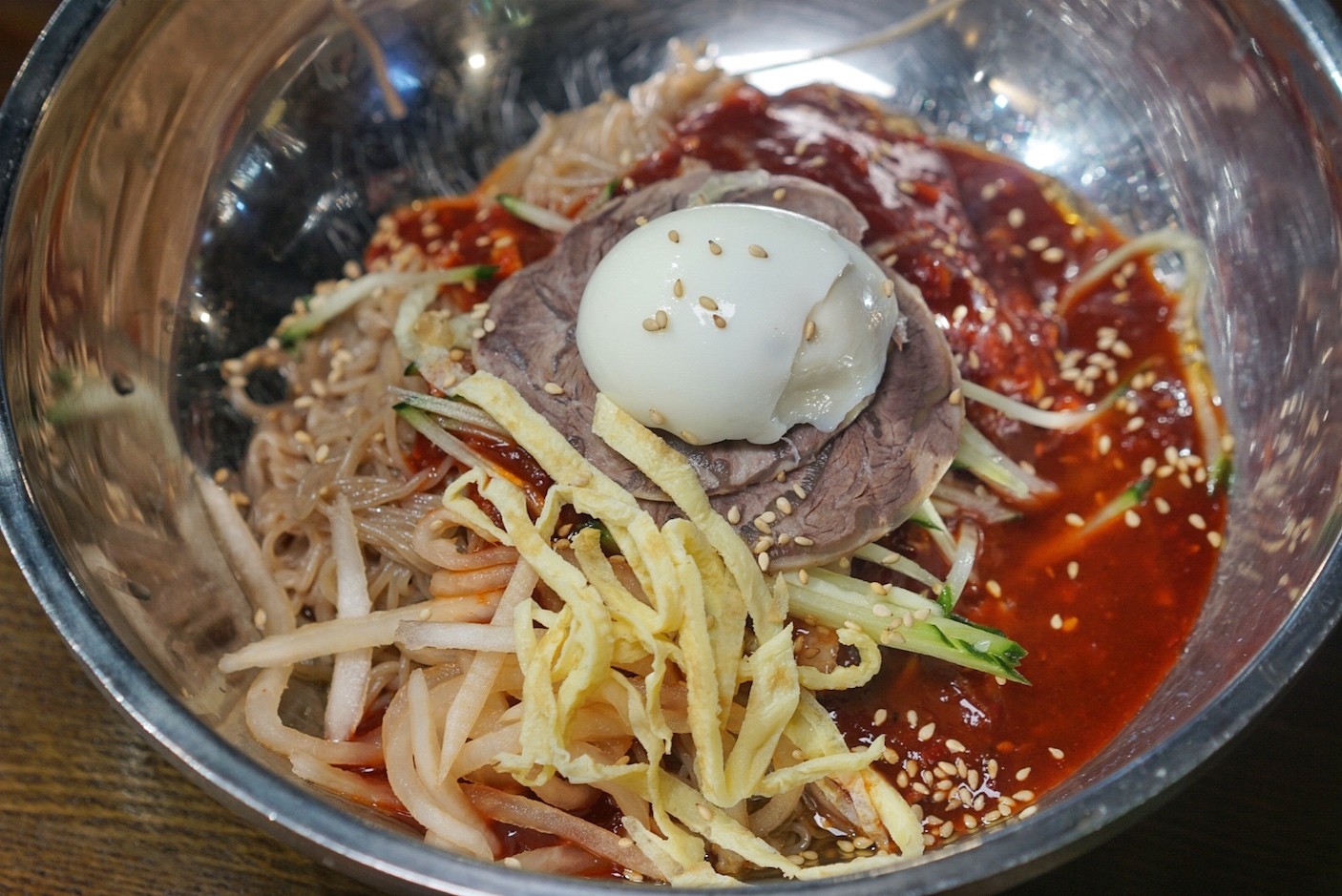
Image by Sophie Steiner/That's
Although most popular as a summer dish, variations can be enjoyed year round, our favorite of which is bibim naengmyeon, involving an extra dollop of fiery gochujang paste-based sauce, lending a lingering chili heat to the cold noodles.
Jeju Canteen by Zhonglu Shanghui 济州食堂 by 钟路商会, L704-705, 198 Xizang Bei Lu 西藏北路198号L704-705
Malaysia – Mee Rebus
Malaya 19th
Meaning 'boiled noodles' in Malay, mee rebus is a staple egg noodle soup dish found at street food stalls across Malaysia, Indonesia, and Singapore.
The gravy that the noodles bathe in is made from sweet potato starch and blended peanuts, along with a slew of aromatics like lemongrass, ginger, candlenut, turmeric, and shallots.
Piquant sambal can also be added to achieve the ideal balance of sweet and heat.
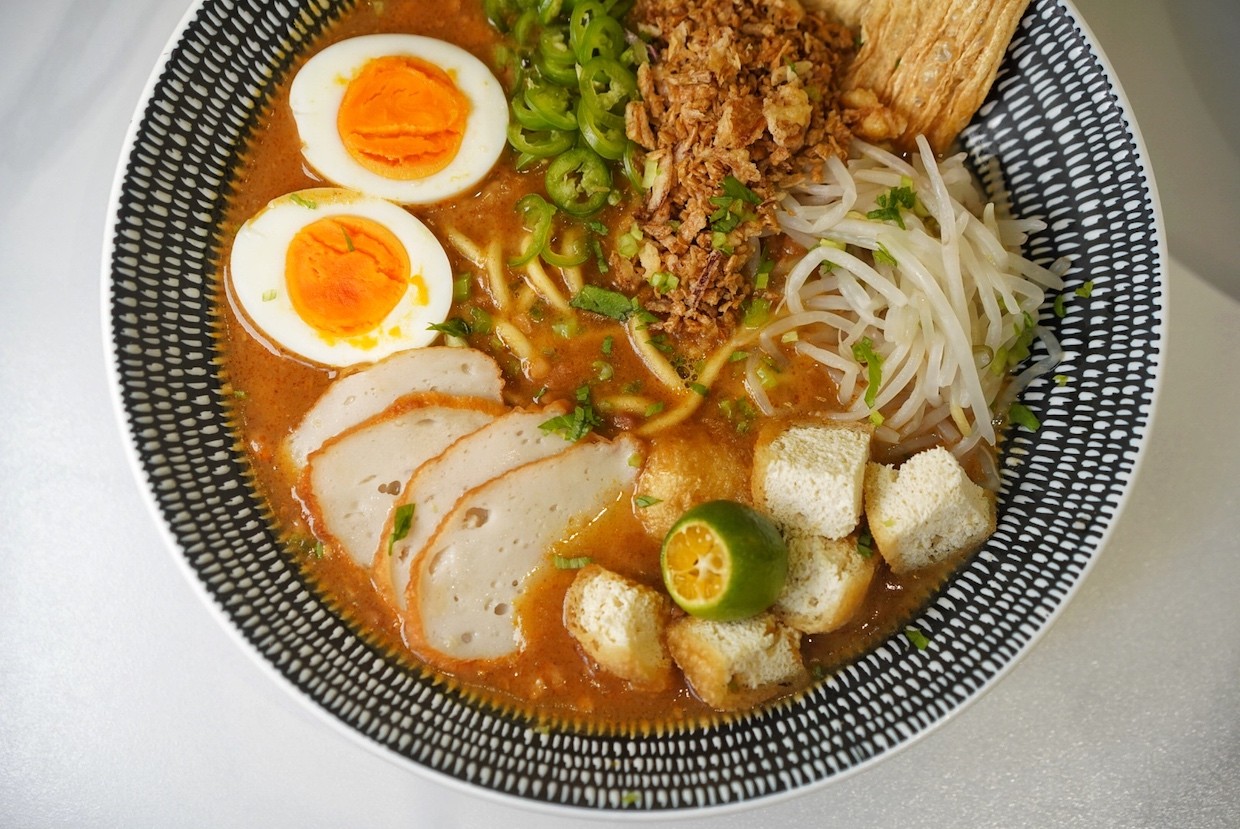
Image by Sophie Steiner/That's
Shanghai’s newest Malaysian restaurant, Malaya 19th opened this past January with an expansive spread of Malaysian noodle offerings, including the treacly bowl that is Mee Rebus (RMB55).
Adorned with tofu puffs, fish cakes, dried shrimp, soft-boiled eggs, crispy bean curd skin, fried shallots, and a sprout salad, each unctuous bite of springy egg noodles is more slurpable than the last.

Image by Sophie Steiner/That's
We also highly suggest springing (pun intended) for the Ban Mee (RMB52) – thick wheat-based noodles sticky with a garlicky soy dressing, surrounded by yuba-wrapped minced pork sausage, fried anchovies (ikan bilis) sautéed pork and mushrooms, fish cakes, and soft-boiled egg.
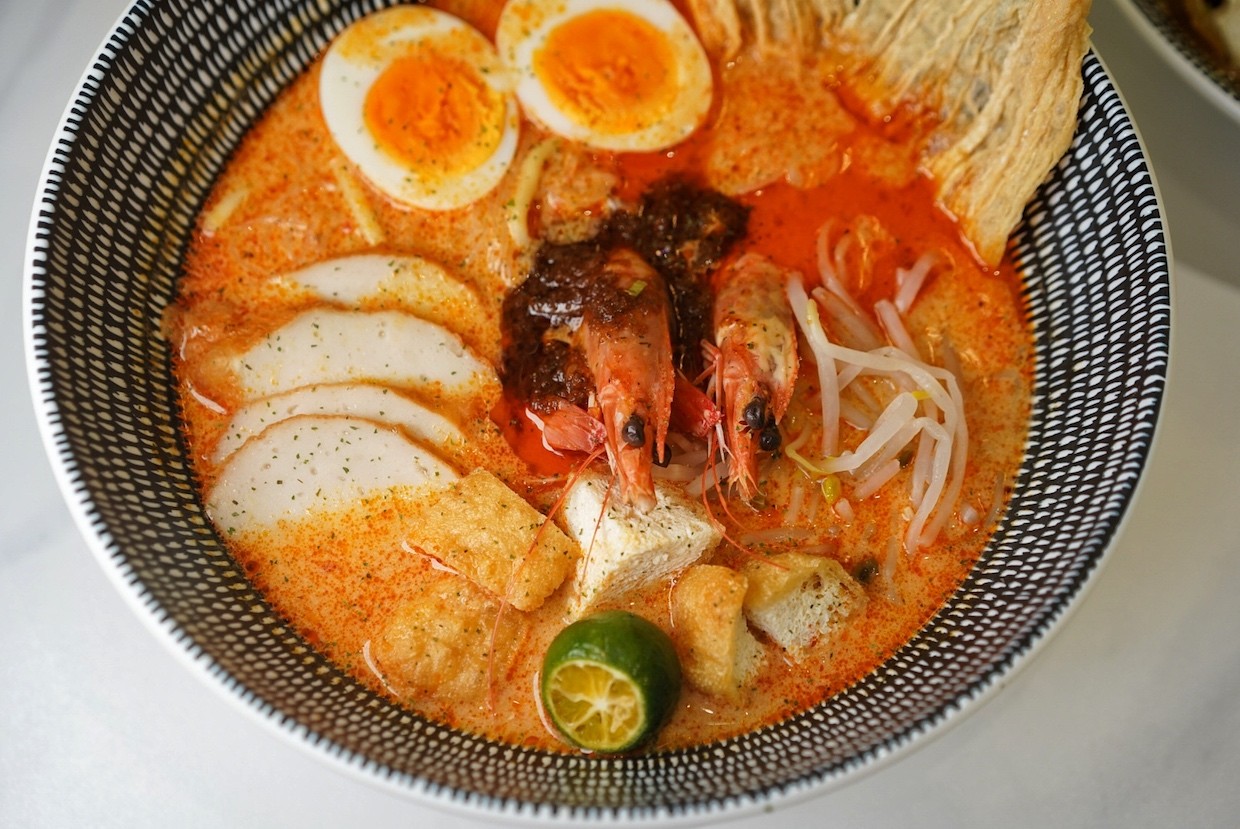
Image by Sophie Steiner/That's
And don't miss out on the coconut creamy Laksa (RMB59) – an overflowing bowl filled to the brim with both silken vermicelli and egg noodles, fish cakes, tofu puffs, yuba chips, snappy prawns, a heaping spoonful of homemade sambal, and a sour squirt of calamansi.
Malaya 19th, 123 Nanyang Lu by Xikang Lu, 南阳路123号近西康路
Thailand – Bangkok Fish Ball Noodles
Tai Bai Zan · Thailand Food Stall | 泰百贊 · 泰國食檔
According to the Bangkok Post, fish ball noodle soup began with the popularity of a few street stalls on Charoen Krung Road nearly a century ago, and grew exponentially from there.
Now as synonymous with Thailand’s capital city as papaya salad and pad thai, fish ball noodle soup can be found at nearly every market and street corner across this megacity.

Image by Sophie Steiner/That's
The makings of a proper Bangkok-style fish ball noodle soup comes down to two key components: the broth – usually a clear pork rib stock or a tom yum translucent broth, heavier on spice and acidity; and the fish balls – umami-rich and bouncy, customarily a blend of a firmer fish such as snapper plus shrimp or cuttlefish.
If you’re lucky, you’ll also enjoy some extra fishcakes and fish dumplings tossed into the steaming pot, along with tofu puffs and your choice of egg noodles, wide or thin rice noodles, or a mix of the three.

Image by Sophie Steiner/That's
Owned by a Bangkok native, Tai Bai Zan · Thailand Food Stall in Shanghai is serving up the closest soup to Bangkok’s original style we’ve found to date.
Of the two soup options, we gravitate towards the Hot and Sour Clear Broth (RMB50) over the Tom Yum (RMB50), with a choice of wide rice noodles or squiggly alkaline noodles.
Toppings are exceedingly generous for the price, a heaving bowlful of fluffy fish and beef balls, a minced pork patty, fish cakes, ground pork, crispy pork cracklin’ pieces and fried wonton skin.
The broth is herbaceous and heavily spiced with aromatics, balanced between the five tastes (sweet, sour, savory, bitter, and umami) that authentic Thai cooking nails so well.
Tai Bai Zan · Thailand Food Stall 泰百贊 · 泰國食檔, B2, 1601 Nanjing Xi Lu, by Changde Lu, 南京西路1601号B2近常德路
Singapore – Laksa
Xing Zhou Xiao Guan Singapore Cuisine | 星洲小馆 · 新加坡
Ranging from coconut curry creamy to pungently tart and fragrant, laksa is a beloved spicy noodle soup from Singapore to Malaysia to Indonesia.
Even within each of these countries, the variations in broth, protein, toppings and noodles fluctuate widely.
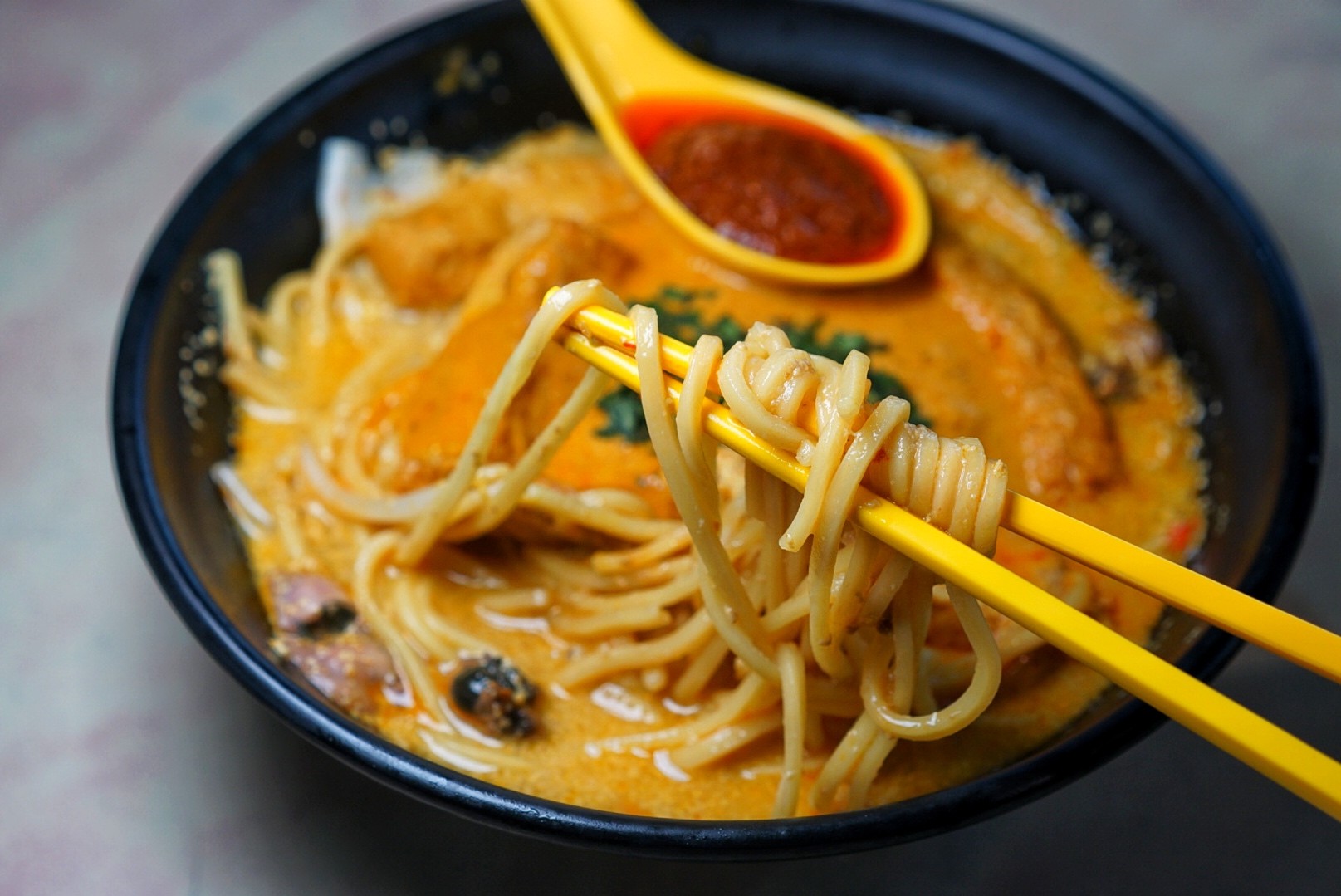 Image by Sophie Steiner/That's
Image by Sophie Steiner/That's
The most common Singaporean rendition conventionally involves a seafood component – prawns, fish cakes, blood cockles, and the like – plus tofu puffs, bean sprouts, herbs and a requisite scoop of sambal, all simmered into a rich coconut milk and spice paste broth.

Image by Sophie Steiner/That's
Of Shanghai’s Singaporean venues, we find ourselves most often visiting Xing Zhou Xiao Guan · Singapore Cuisine, with eight locations around town.
Commonly frequented for its Hainanese Chicken Rice, it’s heaping bowl of Laksa (RMB58) is also worth the jaunt.

Image by Sophie Steiner/That's
The velvety broth is luscious to a fault, more akin to coconut cream than milk, although slightly lacking in depth of citrus and spice, leaving us craving those authentically punchy Singaporean laksa flavors.
However, the pillowy puffs of tofu soak up said broth like a sponge, unleashing a wonderful wave of umami seafood with each chew that has us pining for more.
Each bowl also includes a few slivers of fish cake, three prawns and sliced hardboiled egg.

Image by Sophie Steiner/That's
Our main gripe is that the cylindrical slippery rice noodles can be difficult to snag with chopsticks, and on a textural level are overly gummy; we’d prefer the more customary egg noodles or bee hoon vermicelli instead.
Xing Zhou Xiao Guan Singapore Cuisine 星洲小馆 · 新加坡, 555 Wuding Lu, by Shanxi Bei Lu, 武定路555号近陕西北路
Vietnam – Bun Cha
Bun Cha Cha
A must-eat street food in Vietnam (particularly in the northern city of Hanoi), bun cha is a fragrant mix of grilled pork meat and patties; raw herbs – Thai basil, perilla leaves, cilantro and mint; pickled carrots and daikon; vermicelli rice noodles; lime; and chilis.
Wrapped together in lettuce and dunked in a cold fish sauce, the explosion of flavors is at once refreshingly satisfying and satiating.
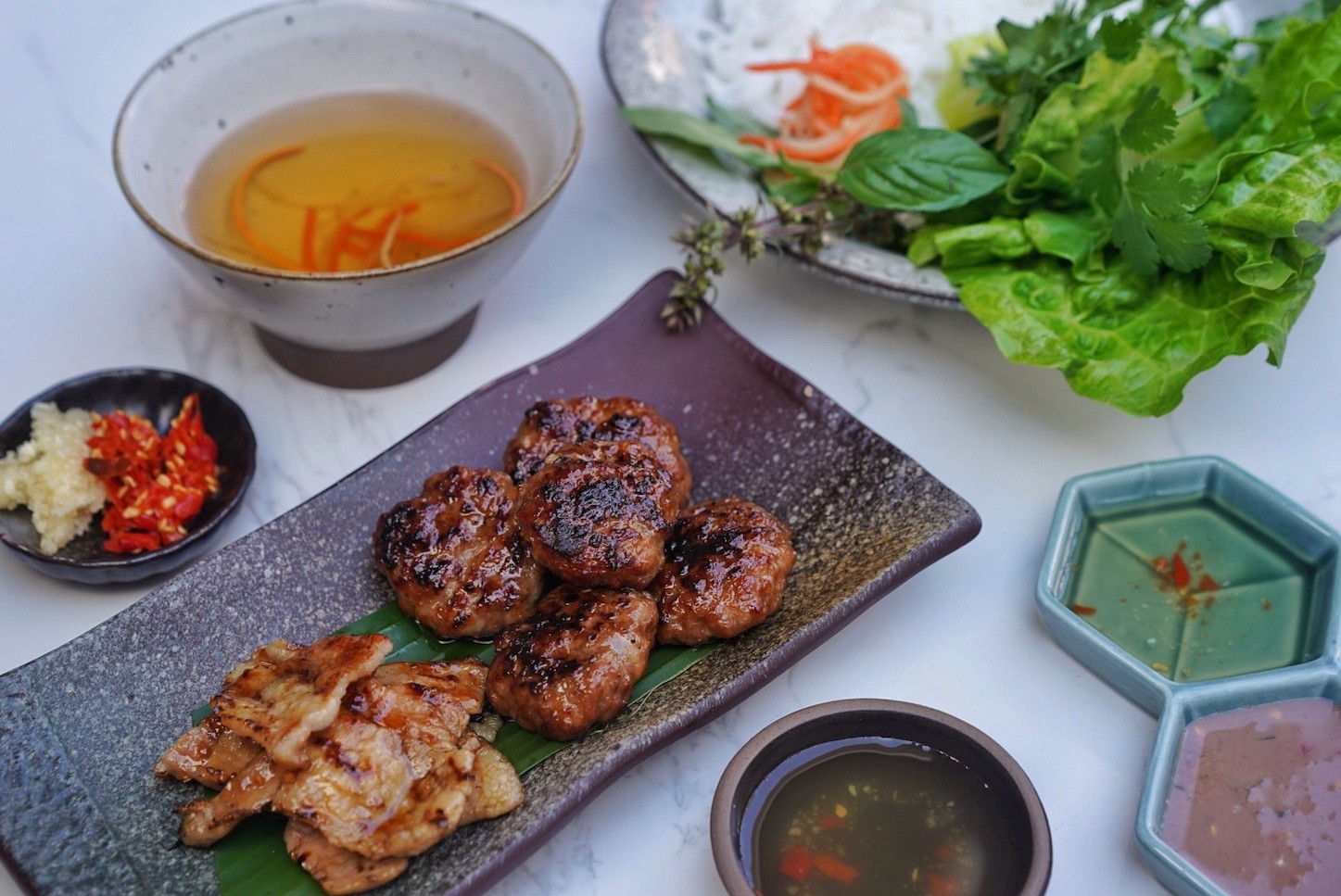
Image by Sophie Steiner/That's
At Bun Cha Cha, you’d be cheating yourself if you skipped the flagship dish, Bun Cha (RMB68).
Presented on a woven wicker plate is an array of ingredients, including chilled vermicelli rice noodles, lettuce, quick-pickled shreds of carrot and daikon, and a myriad of herbs.
The star of this dish is the pork – in the form of charred, smoky patties matched with streaky slices of thick-cut belly.
While there are beef, chicken and shrimp options, we highly suggest going with the original pork, as the Vietnamese food gods intended.
All versions come with a small bowl of the famous Hung Thinh fish sauce from Phu Quoc Island, mixed with sugar and pickled veggies to create a sweet and savory cold 'broth' of sorts.

Image by Sophie Steiner/That's
If it’s your first time, rest assured: there’s no wrong way to eat bun cha: combine it all together in the sauce bowl like banmian cold noodles; or make bun cha-‘tacos’ by wrapping the ingredients up in a piece of lettuce.
The power falls exactly where it should, in the hands of the consumer.
Bun Cha Cha, B103B, 222 Huaihai Zhong Lu, by Songshan Lu, 淮海中路222号B103B近嵩山路
Part II Coming Soon!
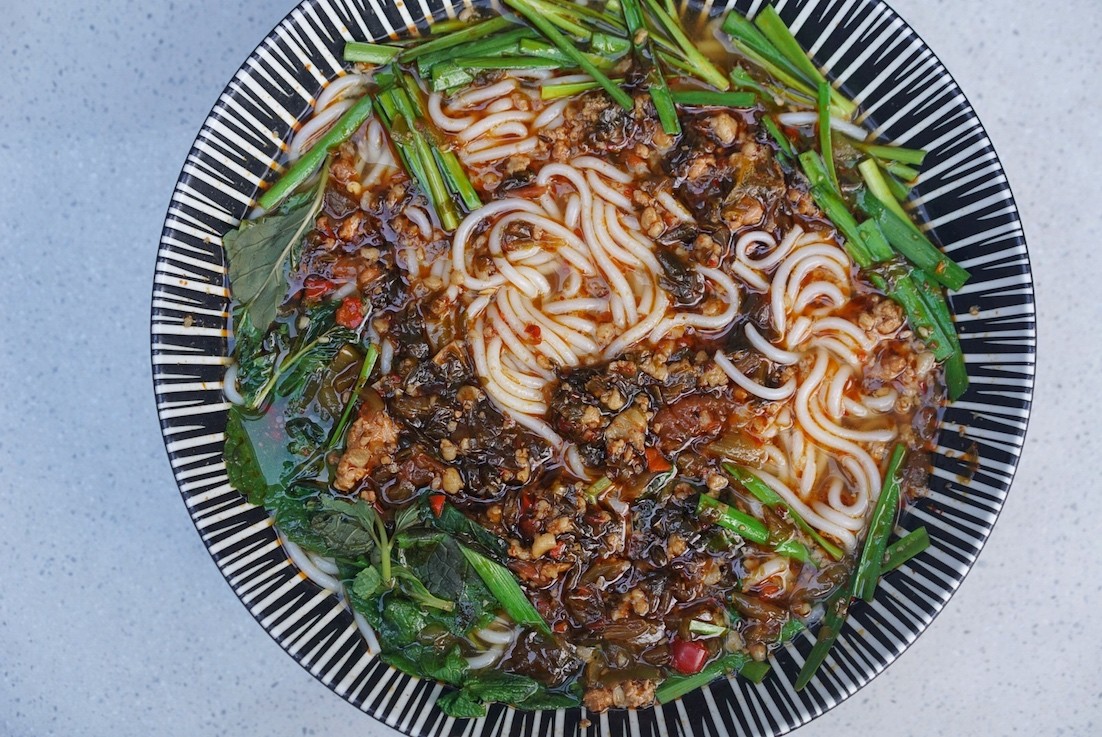
Image by Sophie Steiner/That's
This is just the tip of the iceberg – we are keeping our eyes peeled and stomachs at the ready for the likes of Laos khua mee, Cambodian nom banh chok, Myanmar shan noodles, or even Indonesian mie goreng and soto ayam to continue our noodle-focused culinary expedition in our Asian Noodle Odyssey Part II.
READ MORE
Show Us Your Best Noods! 8 Bowls of Chinese #PastaPorn

Show Us Your Best Noods! 9 Bowls of Chinese #PastaPorn – Part II
Show Us Your Best Noods! 7 Bowls of Chinese #PastaPorn – Part III
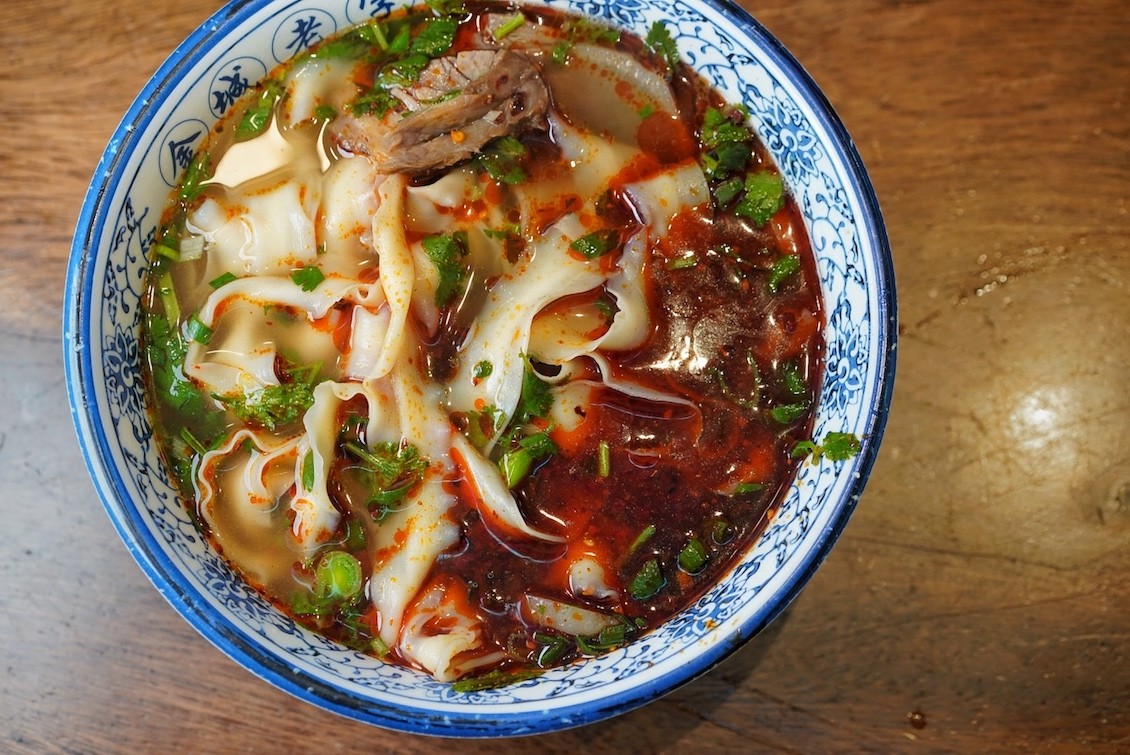
[Cover image by Sophie Steiner/That's]





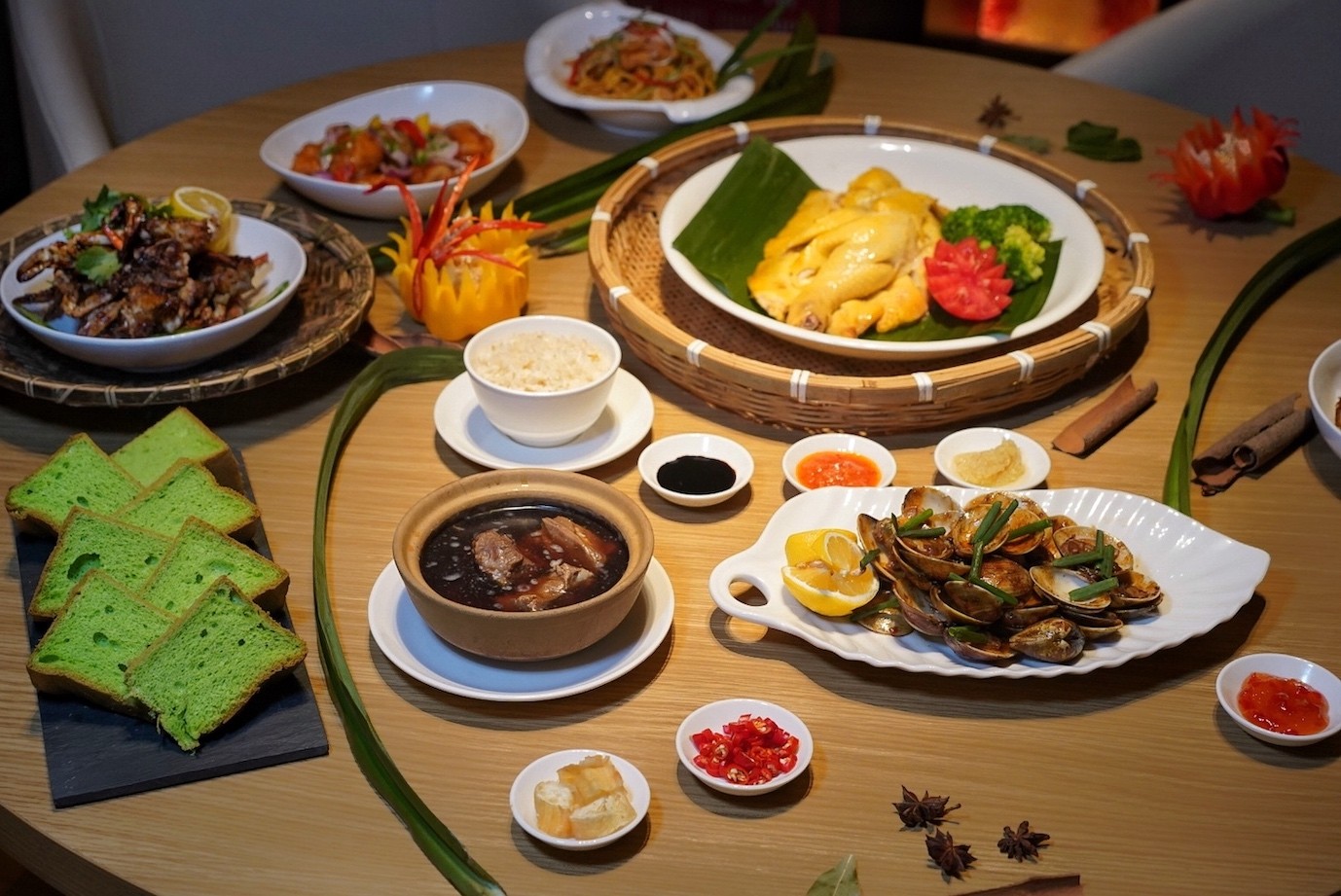
















0 User Comments